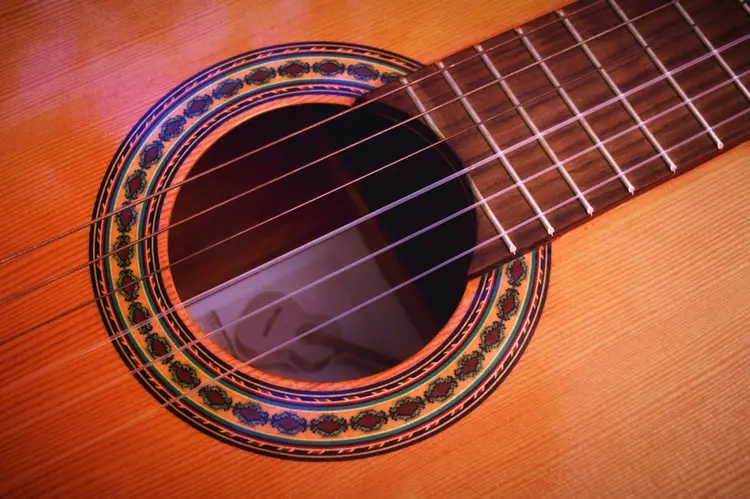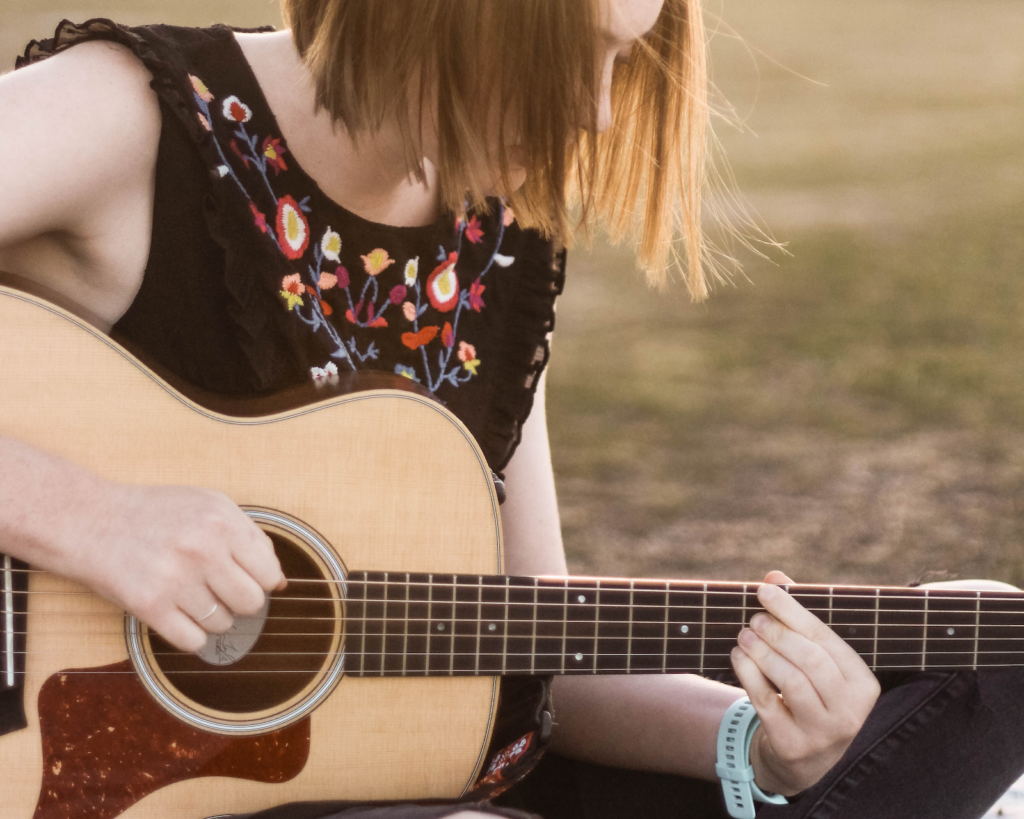When it comes to learning how to play the guitar, mastering beginner chords is essential. The B chord is a fundamental major chord that finds its place in so many songs across various genres. Being able to play this chord in different forms not only enhances your guitar skills but also provides versatility in your musical expression.

The Standard B Chord Shape
The Standard B chord is often regarded as the cornerstone of guitar playing, particularly when it comes to mastering chord variations. This shape is a fundamental part of a guitarist’s arsenal, essential for playing a wide array of songs and styles.
Anatomy of the Standard B Chord Shape
To form the standard B chord shape, you start by placing your index finger (or first finger) on the second fret of the fifth string. This finger acts as the root note of the chord. Unlike in a full-barre chord, your index finger doesn’t stretch across all the strings but is focused on the fifth string, providing a strong bass note for the chord.
Next, the barre element comes into play. While not a full barre like in other major chords, this shape requires you to barre the D, G, B, and the high E string at the fourth fret. This is typically done using your ring finger (fourth finger) or pinky finger.
This technique can be challenging for beginners as it requires finger strength and precision to ensure all the notes ring clearly.
Techniques for Clean Sound
Finger Placement – Make sure your ring or pinky finger is straight and well-positioned on the fourth fret to barre the four strings effectively. Avoid placing your finger too far back from the fret, as this can cause buzzing.
Thumb Position – Your thumb should be at the back of the guitar neck, roughly opposite your index or middle finger. This position provides the leverage needed for a clean barre.
Wrist Angle – Keep your wrist at a comfortable angle. A strained wrist can make it harder to maintain a clean barre.
Pressure Application – Apply even pressure across the barred strings. It’s common for one or two strings not to sound as clear, so focus on applying pressure evenly.
Transitioning to Other Chords
The standard B shape is also valuable for transitioning to other simple chords. Its position on the fretboard makes it a convenient shape to slide into chords like C#, D, or A. Practicing these transitions will enhance your fluidity when playing both the acoustic and electric guitar.

Easy B Chord: A Beginner’s Ally
The easy B shape is a godsend for beginners. Played as a three-note triad on the first three strings of the guitar, this version simplifies the B chord, making it more accessible. This easy shape is particularly useful when you’re just starting and need to quickly play the B chord in a song. It’s an excellent stepping stone towards more complex barre chords. It’ll help you master two-chord songs, three-chord songs, and more.
Barre Chord Variations
Barre chords are a significant aspect of guitar playing. The B chord is often played with its root on the 2nd fret of the A string. Another popular barre shape for B major is found on the 7th fret, utilizing the E major shape. These variations offer a richer sound and are essential for fluid playing.
Alternative and Useful B Chord Shapes: Expanding Your Chord Vocabulary
Alternative and useful B chord shapes are key to expanding your chord vocabulary. These variations not only add color and texture to your playing but also provide practical solutions in different musical contexts.
B Sus 4 and B Sus 2 Chords
The B Sus 4 and B Sus 2 chords are fascinating alternatives to the standard B major chord. These suspended chords offer a different flavor, often used to create tension or a sense of anticipation in music.
B Sus 4: To play the B Sus 4, you’ll typically add a note that is one step higher than the third of the B major chord. This chord gives a slightly unresolved, suspenseful sound, which is great for building up to a musical resolution.
B Sus 2: The B Sus 2, on the other hand, involves replacing the third of the B major chord with a second. This chord has a more open, airy quality compared to the B major and is often used for a lighter, more ethereal sound.
B7 Chord: The Dominant Seventh Variation
The B7 chord, a dominant seventh chord, is another useful variation. It’s commonly used in blues, jazz, and many other genres. To form a B7, you add a minor seventh (A) to the B major chord. This chord has a distinct, slightly bluesy sound and is often used as a transition chord, leading nicely into the E major chord.
B Minor Chord: The Minor Alternative
The B minor chord is an essential alternative. It’s formed by flattening the third of the B major chord. The B minor has a more somber, reflective tone and is widely used across various musical styles.
B Add9 and B6 Chords: Adding Color
B Add9: The B Add9 chord adds a ninth (C#) to the basic B chord. This chord has a lush, expansive sound, often used in pop and rock ballads.
B6 Chord: The B6 adds the sixth (G#) to the B chord. This chord has a pleasing, harmonious sound and is frequently used in jazz and R&B.

Tips for Mastering B Chord Variations
Start with the Basics – Begin with the easy B chord before progressing to the standard and barre chord variations.
Finger Placement – Ensure correct finger placement for clarity of sound. The index finger, middle finger, and third finger play crucial roles in forming different B chord shapes.
Practice Transitioning – Regularly practice transitioning between the B chord and other basic chords to build muscle memory.
Experiment with Music – Try different shapes in various songs to understand their unique sound and application.
Conclusion: The Versatility of B Chord Variations
Understanding and mastering how to play the B chord enriches your playing and enhances your skills. Whether it’s the standard shape, an easy triad, a full barre chord, or alternative shapes, each variation has a unique place and function in music. By learning these variations, you gain flexibility and ease of play, allowing for more creative and expressive playing.
Remember, the journey of mastering the B chord, like any aspect of the guitar, is a mix of practice, patience, and exploration. Embrace the challenge, and enjoy the musical journey!


